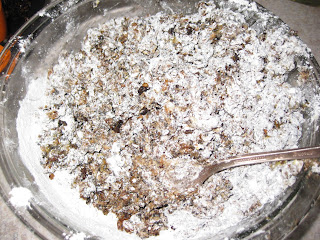Oh, what fun the fall is. Liz and I took a trip with Ed and Lexi to Butler's Orchard to pick pumpkins. The second most fun part about fall after brewing up our seasonal Leafblower beer. My prized pumpkin had the thickest stem I've ever seen in a pumpkin. We nicknamed it "Girthy" and my hand looks so small around it as you can see. Innuendos aside though, we had quite the haul.
The poor pumpkin I got managed to start going rotten a few days after we brought it home, getting two pretty big soft and white moldy splotches on the back and bottom. It may have been caused by it rolling around in the trunk, or maybe it devoted too much of its resources to growing such a thick stem. I carved it into an elephant, with the stem as a trunk. I also managed to cut a bit of the non rotten part out for the beer, which is why I digressed from the beer and mentioned the pumpkin trip at all.
The star of Leafblower is the butternut squash, even though we throw in some random squash in there. This year I threw in an acorn squash into the mix. Mine came from a farmer's market in Bethesda. Ed's contribution came from his mother's garden. Here are mine before I char the heck out of them, and then puree them in the food processor.
Brewing day was here. We were brewing a "Hex Nut Brown Ale" from Midwest Brewing. I've never ordered anything online before, but went with it for the sake of timing. We normally brew this batch for a pre-Thanksgiving meal we share with folks that live on Battery Lane (namesake of our operation), so we had to get rolling on the fermentation. We did this last year, where we were rushing last minute. We never learn. In the end, I ordered online because I couldn't get up to Frederick in time. I won't do Northern Virginia on a week day, so that was out too. The place in Frederick also recently switched locations, and I wasn't in the mood for change.
Here Ed is dunking the specialty grains.
There were 8 oz of Caramel, 8 ounces of brown, and 8 ounces of chocolate malt.
In addition to the grain, there were 6 pounds of Amber Liquid Malt Extract.
The milk bottle it comes in is extra fun to squeeze. Ed narrowly missed a huge bubble with this photography.
Mid-boil, we're adding 1 1/2 ounces of Willamette hops. Last fall, when Liz and I went to Seattle, we drove by Willamette, along with a bunch of other cities named for hops. (Hops came first, right?...haha)
Here's about 3 1/2 pounds of squash being added to the boil, about 25 minutes into a 60 minute boil.
After about an hour of the boil, we added 1/2 ounce more of hops for aroma and about a pound more of the squash. Due to the joy Ed and I were feeling from tasting 4 different varieties of our Strawberry Kolsches, a Coffee Porter we also made, as well as an Apricot California Copper, not to mention an Heff I made about 3 years ago (pre-meeting Ed), we were a bit sloppy with the additions. Brewing is about fun though, remember that, so sometimes it is a day of precision and some days it is about 2 guys having some beers and enjoying a Sunday morning. Here we are finally cooling things down.
Squash is one of the hardest things to filter out, and this batch was no exception. You can see the dog helping us clean as we go.
I got nervous our sloppiness may have led to some errors when our fermentation didn't start in the first 48 hours. You start thinking about throwing squash in without having boiled/cooking it thoroughly. I lost a bit of sleep thinking about it. But finally, Tuesday morning, there was a trace of yeast life. By evening, we had a decent amount of foam going on.
Now the most fun I had with this was on my day off. The beagle and I had some fun. We used the spent grain to make dog treats. Since it is a dark beer, the grains look burned (well, they are sort of, given the roastedness.) They basically have the consistency of cooked oatmeal or brown rice at this point. Most, if not all, the sugars are gone from it.
The recipe called for 4 cups of spent grain, 2 cups of flower, 2 eggs, and a cup of peanut butter. Knowing Bailey (the beagle) doesn't need that much peanut butter flavor, because she'll eat anything, and that the price of peanut butter is on the up and up (thanks to flooding in the south I think) I went with only a 1/2 cup of peanut butter.
Here she is eye-ing it up. I mixed it all up, then pressed it pretty flat on a cookie sheet, and attempted to use a cookie cutter to get star shapes. The cuter and more detailed shapes didn't pan out in the thick and haphazard "dough". I cooked it for an hour on 350, then broke out the shapes and then the larger non-shapes into bit size pieces. I then cooked it another 4 hours at 250. Here's Bailey looking in eager anticipation. She doesn't realize they are dog treats yet, just that she loves anything human food related.
I got 3 bags full of the treats. You cook them so long on low in an effort to get the moisture out and keep mold from growing. Even though I had chocolate malt in this batch, there isn't actually any chocolate in it, so it is still safe for dogs. Just make sure there weren't any hops in it, since dogs don't take well to those either.










































